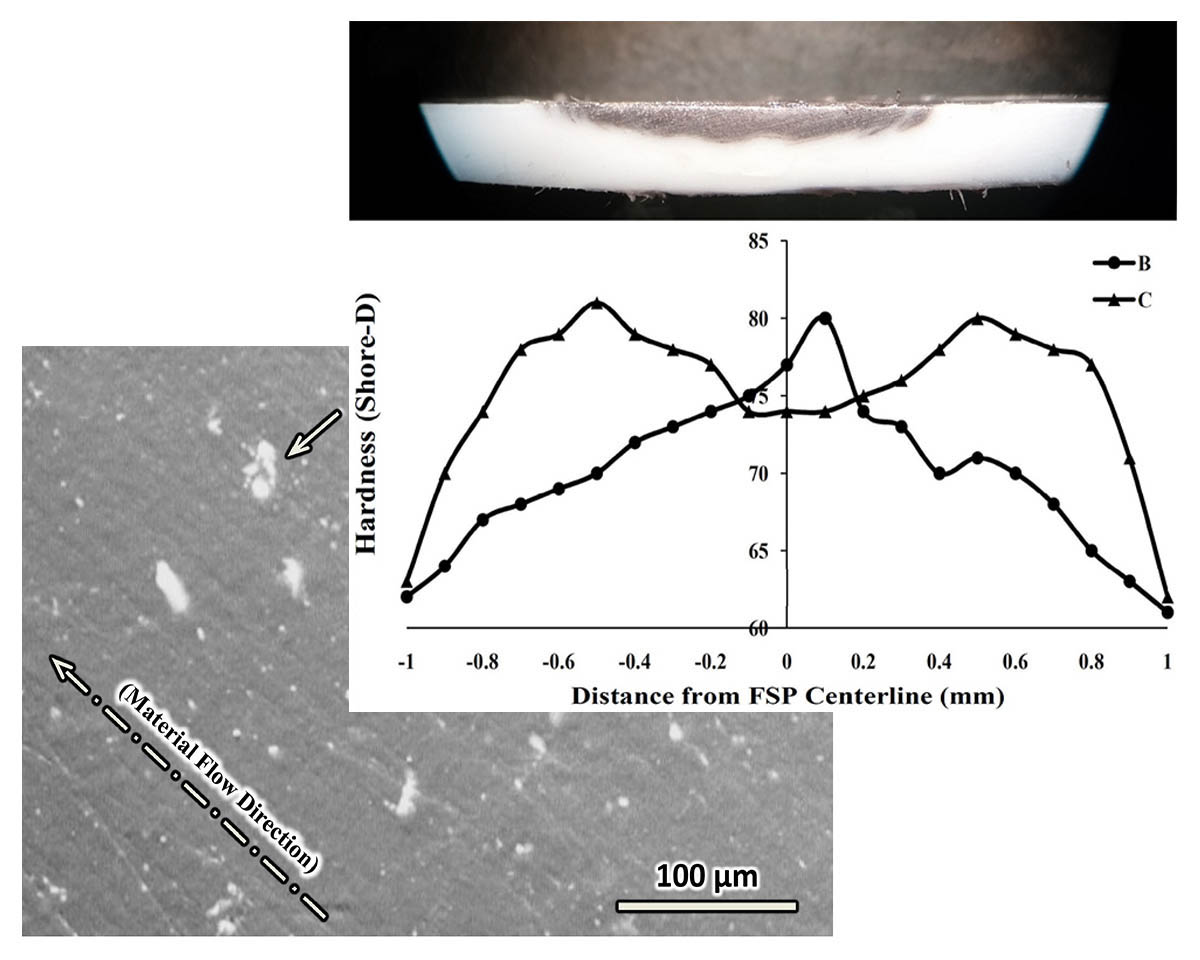Tribological behavior and mechanical properties of friction stir processed HDPE/Fe-Fe3O4 composites
- 1 Technical Services Department, Pars Petrochemical Company, Asaluyeh, Iran
- 2 Department of Mechanical Engineering, University of Mohaghegh Ardabili, P.O. Box 179, Ardabil, Iran
- 3 Department of Materials Science and Engineering, School of Engineering, Shiraz University, Shiraz, Iran
Abstract
In the current work, high density polyethylene (HDPE) composites were fabricated via Friction Stir Processing (FSP). A two-phase Fe-Fe3O4 powder was used as the reinforcing agents. The extremely low cost powder was obtained from shot-blasting of as-forged low carbon steel components. X-ray diffraction (XRD) was used to phase analysis and evaluation of the purity of the as-received powder. The size distribution of the powder was determined by Laser Particle Size Analysis (LPSA). Also, Scanning Electron Microscopy (SEM) was employed to investigate the particles morphology. The processing used a cylindrical tool to impose the severe plastic deformation and material stirring in order to improve the mechanical properties and particles distribution. The tribological and mechanical properties of the fabricated samples were examined. According to the results, both the friction coefficient and specific wear rate of FSPed samples reduced remarkably. The hardness and tensile strength of the FSPed composites were higher than the FSPed HDPE samples; however, their elongations were lower.
Downloads
References

Copyright (c) 2021 Saeed Karimi, Seyed Mohammad Arab, Seyyed Reza Hosseini Zeidabadi, Sirus Javadpour

This work is licensed under a Creative Commons Attribution 4.0 International License.
Copyright
Authors are the copyright holders of their published papers in Synthesis and Sintering, which are simultaneously licensed under a Creative Commons Attribution 4.0 International License. The full details of the license are available at https://creativecommons.org/licenses/by/4.0/.
All papers published open access will be immediately and permanently free for everyone to read, download, copy, distribute, print, search, link to the full-text of papers, crawl them for indexing, pass them as data to software, or use them for any other lawful purpose without any registration obstacles or subscription fees.












